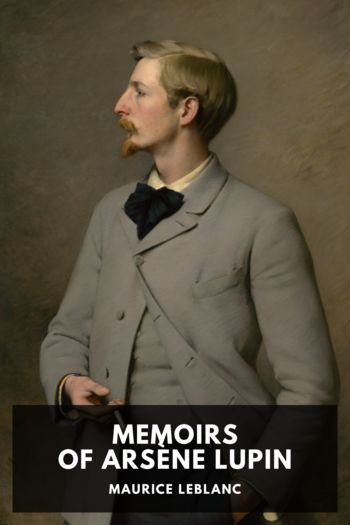Memoirs of Arsène Lupin, Maurice Leblanc [librera reader txt] 📗

- Author: Maurice Leblanc
Book online «Memoirs of Arsène Lupin, Maurice Leblanc [librera reader txt] 📗». Author Maurice Leblanc
By Maurice Leblanc.
Translated by Alexander Teixeira de Mattos.
This ebook is the product of many hours of hard work by volunteers for Standard Ebooks, and builds on the hard work of other literature lovers made possible by the public domain.
This particular ebook is based on digital scans available at Google Books.
The writing and artwork within are believed to be in the U.S. public domain, and Standard Ebooks releases this ebook edition under the terms in the CC0 1.0 Universal Public Domain Dedication. For full license information, see the Uncopyright at the end of this ebook.
Standard Ebooks is a volunteer-driven project that produces ebook editions of public domain literature using modern typography, technology, and editorial standards, and distributes them free of cost. You can download this and other ebooks carefully produced for true book lovers at standardebooks.org.
PrefaceThis is the story of the first adventure of Arsène Lupin, and undoubtedly it would have been published before the stories of the others if he had not so often and so resolutely opposed it.
“No,” he would say, “there are one or two little matters yet to be settled between the Countess of Cagliostro and me. We must wait.”
The waiting lasted longer than he foresaw. More than a quarter of a century passed before the final settlement; and only today am I permitted to relate the frightful duel of love and hate which brought a boy of twenty to grips with Cagliostro’s daughter.
Memoirs of Arsène Lupin I Arsène Lupin at TwentyRalph d’Andresy extinguished the lamp, and thrust his bicycle behind a bank. At that moment the clock of Benouville struck three.
In the deep shadow of the night he followed the lane which led to the estate of La Haie d’Etigues and so came to the wall which ran round it. He waited a little—the sound of horses pawing the ground, of wheels which rang on the pavement of the courtyard, the sound of harness bells. Then the two leaves of the big door were thrown open and a carriage passed out. It passed so quickly that Ralph barely caught the sound of men’s voices and perceived the barrel of gun before the vehicle reached the highroad and took the way to Etretat.
“Come,” said he. “Shooting gulls is an attractive sport and the rock where they shoot them is a long way off. At last I’m going to know the meaning of this improvised shooting-party and of all these odd comings and goings.”
He took his way along the boundary wall to the left, turned a corner and then another, and stopped forty yards along the wall. In his hand he held two keys. The first of them opened a small, low door. He went through it up a staircase hollowed out of the wall, half fallen to ruin, which, running along its left wing, had formed one of the old defences of the château. The second key opened for him a secret door in the first floor of the château itself.
He lit a small bull’s-eye lantern and without taking any special precautions, since he knew that the staff of servants lived in the other wing and that Clarice d’Etigues, the only daughter of the Baron, had her rooms on the second floor, went down a passage which brought him to a large study. In that very room some weeks previously he had asked the Baron for his daughter’s hand in marriage. His proposal had been received with an explosion of indignant anger of which he retained a most disagreeable recollection.
A mirror showed him the pale face of a young man, even paler than usual. However, inured to emotion, he remained master of himself and coolly addressed himself to his task.
He was not long about it. In the course of his interview with the Baron he had observed that that gentleman now and then cast a glance at a large mahogany roll-top desk of which the top had not been drawn down. Ralph knew all the places in which it is possible to put a secret drawer and all the mechanical devices that work such secret drawers. In a very short time he discovered in a cranny of the desk a tiny drawer which held a letter written on very thin paper and rolled up into the shape of a cigarette. No signature. No address.
He studied this letter, which at first appeared to him too commonplace for anyone to have taken so much trouble to hide it, and after working on it with the most minute care, giving the most earnest consideration to certain words which seemed significant and ignoring certain phrases evidently intended to fill the gaps between them, he was able to disentangle the following:
I found at Rouen traces of our enemy and I have had published in the local newspapers a story that a peasant in the vicinity of Etretat has dug up in his field an old copper candlestick with seven branches. At once she telegraphed to the livery stable at Etretat to send, at three o’clock in the afternoon on the twelfth, a brougham to meet her at Fécamp station.
On the morning of that day I will see that the livery stable receives another





Comments (0)